A couple characters, enemies, and items underwent name changes during the jump to North America. Here’s a look at them.
Princess Toadstool / Princess Peach
In the Japanese version of Super Mario Bros., the princess is named Princess Peach.
For some reason, the folks at Nintendo of America thought she should be named Princess Toadstool instead, so that’s what her name is in the American version. She remained with that name until Super Mario 64, when they decided to turn her back into “Princess Peach” in a calculated way.
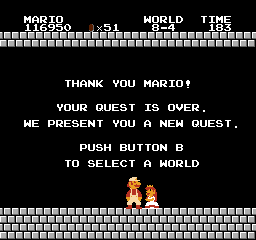 |
Mushroom Retainer / Kinopio
In the Japanese version of Super Mario Bros., the characters you save at the end of most castle levels are called “Kinopio”. The name is based on the Japanese word “kinoko”, which means “mushroom”.
In the American version, these guys are called “Mushroom Retainers”. The name “Toad” didn’t exist yet.
As a little kid, I had no real idea what a “retainer” was. It sounded like “container”, so I figured they held mushrooms in some fashion, or that maybe they acted like heart containers in Zelda. Now whenever I hear the word, I think immediately of these guys. And Cyan from Final Fantasy III/VI. And then lawyers.
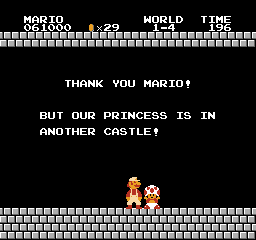 |
Bowser / Koopa
In the Japanese version, the final boss is simply called “Koopa” or if you add his full title, is something along the lines of “Great Demon King Koopa” or “Great Magic King Koopa”.
In the American version, he’s called “Bowser”.
I’ve always wondered where “Bowser” came from and why it was used. The name evokes something really bulky and powerful, and it used to be a common dog name. It’s also been the nickname for a type of tank, among other things. I wonder what exactly made them choose this name, though. And why they decided to change the name at all.
The name differences gets explained in later Mario stuff by calling him “King Koopa” or by saying that his full name is “Bowser Koopa”, but that always seemed like a lame fix to me, even as a kid. Same with the whole Mario Mario and Luigi Mario thing.
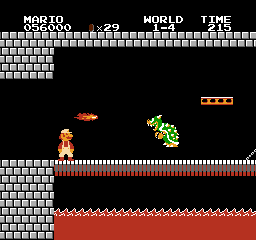 |
Goomba / Kuribo
In Japanese, this basic enemy is called a “Kuribo”.
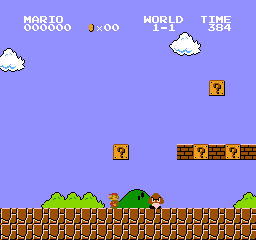 |
They name comes from the Japanese word “kuri”, which means “chestnut”. The Japanese instruction booklet says they’re mushrooms, though. Just in case you’re not sure what chestnuts look like, here you go:
 |
It sounds like the “bo” here is 坊, making his name something like “chestnut boy” in this context. Apparently Shigeru Miyamoto had intended for these enemies to be evil shiitake mushrooms but the programmer insisted that they looked more like chestnuts than anything.
Anyway, in the American version of the game, these enemies are officially called “Little Goombas” but everyone just calls ’em “Goombas”. I’m assuming the name comes from goombah, but given some of these other made-up names in the game, who knows for sure. Whatever the case, I really like the name “Goomba”, it somehow fits them so well. Or maybe that’s like 25 years of old memories talking.
Koopa Troopa / Noko-Noko
In Japanese, this walking turtle enemy is called a “Noko-noko”, which is a Japanese term for going somewhere or doing something without much care. In this sense, the idea of wandering around nonchalantly fits them well.
In the American version, they’re called “Koopa Troopas”. “Koopa” being their tribe/species name, and “Troopa” being a play on the word “trooper”.
I think the localizers did a good job here – trying to fit onomatopoeia (sound effect word) or something like that into an English version would’ve been disastrous. Coming up with something completely original but still somewhat humorous was an excellent decision.
That said, I can’t tell which one I like better, they have amusing names in both languages!
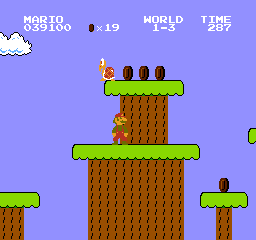 |
I was just reminded by a reader that there are “Nok Nok Shells” in Super Mario RPG – so if you’ve always wondered what was up with that name, this explains it. It should’ve been called a “Koopa Troopa Shell” or something like that instead, but it sounds like the translation had been mostly handled by Square rather than NOA.
Koopa Paratroopa / Pata-Pata
In the Japanese version, the flying turtle enemy is called a “Pata-pata”, which is the Japanese onomatopoeia for flapping wings.
In the American version, they’re called “Koopa Paratroopas”, this time the play on words is with “paratrooper”.
I think I like the American version better here.
 |
Buzzy Beetle / Met
In the Japanese version of Super Mario Bros., this beetle is called a “Met”. “Met” means “helmet” in Japanese, it’s actually just a shortened version of the English word. You’ll also note that those Mega Man enemies have this name too, for the same reason.
In the American version, they’re called “Buzzy Beetles”. I can see why calling them Helmets might be weird in English, though I’m not sure how exactly these beetles are “buzzy”. Only thing I can think of is their speed, but they’re not especially fast. Oh well.
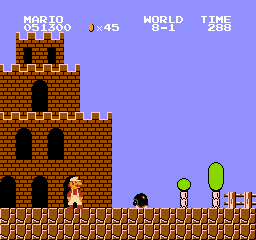 |
Lakitu / Jugemu
In Japanese, this evil enemy is called “Jugemu”, and was officially romanized as “Jugem” in later Japanese games.
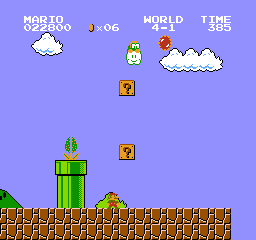 |
I always, always wondered what the heck was up with this Japanese name, and apparently it comes from an old Japanese rakugo folk tale. In it, some parents want to come up with a name for a baby, but they can’t decide on one, so the kid ends up with a crazy-long name:
Jugemu-jugemu Gokonosurikire Kaijarisuigyo-no Suigyomatsu Unraimatsu Furaimatsu Kunerutokoroni-sumutokoro Yaburakojino-burakoji Paipopaipo-paiponoshuringan Shuringanno-gurindai Gurindaino-ponpokopino-ponpokonano Chokyumeino-chosuke
You can read more about the story here. You can also see a portion of the story acted out in English here:
Jugemu isn’t the only enemy to get its name from this story, as we’ll see soon.
Also, I’m fairly certain that in the English version of Super Mario 3 they accidentally keep the name “Jugem” in. I remember being confused by it as a kid, only years later did I realize what the deal was.
 |
Anyway, in the American version of Super Mario Bros. this enemy is called “Lakitu”. I really don’t know what it means or why they changed it to that. It’s cool and all, it just seems like a very strange choice to make. It actually seems MORE foreign this way than “Jugem”!
I’ve always pronounced this name as “LAH-kih-too” or some similar variant, and most everyone else I’ve come across says it similarly. But every so often I hear some really crazy pronunciations, like “luh-KEE-too”. I’m guessing some of the more recent Mario games/spinoffs clears this pronunciation stuff up, though.
Spiny / Togezo
In the Japanese version, this weird spiny creature is called a “Togezo”. The name comes from the Japanese word “toge”, which means “spike” or “thorn”. I’m not sure if “zo” comes from anything – the best I can come up with is that “zo” is sometimes the end of some older Japanese names. Seems like a stretch, though.
In the American version, this enemy is called a “Spiny”.
Both names seem appropriate enough and get the point across pretty quickly. I swear that wasn’t meant to be a pun.
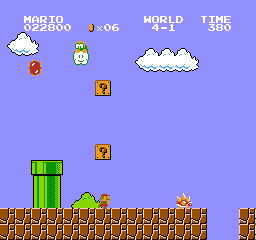 |
Spiny Egg / Paipo
In the Japanese version, the egg thing that turns into a Spiny/Togezo is called a “Paipo”. This name comes from the Jugemu folk tale too.
In the American version, they don’t really have a name, they’re just called “Spiny eggs” or “Spiny’s eggs”.
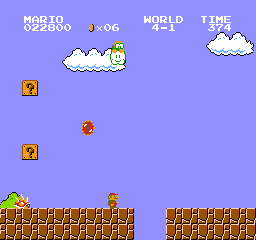 |
Piranha Plant / Pakkun Flower
In the Japanese version of Super Mario Bros., this man-eating plant is called a “Pakkun Flower”. This comes from “paku”, which is the Japanese sound effect word for taking a big bite. The added “kun” at the end is likely the Japanese name suffix “-kun”.
In the American version of Super Mario Bros., these are called “Piranha Plants”. Well, technically it’s spelled “Pirana plants”, according to the instruction manual. It’s clear that’s just a typo, though.
I like both names – I can’t help but think that if they went with English onomatopoeia too, they would’ve used the word “chomp” in there, meaning the good ol’ Chain-chomps from later games might’ve had to be called something different.
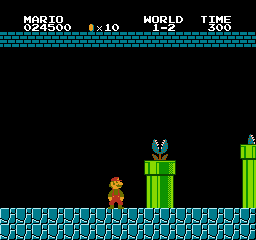 |
Cheep-Cheep / Puku-Puku
In the Japanese version of this game, this fish enemy is called a “Puku-puku”, which is Japanese onomatopoeia for when something swells up. It also sounds kind of like the onomatopoeia for breathing underwater (“buku-buku”).
In the American version of the game, the fish are called “Cheep-cheeps”. But I’m not sure why; if anything I’d think a bird enemy would get that name, not a fish.
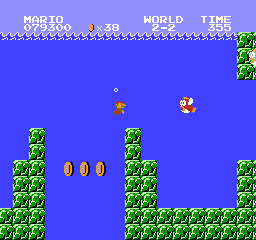 |
Bloober / Gesso
The squid enemy in the Japanese version is called a “Gesso”. The name comes from “geso”, which, in the context of squids, means “tentacles”.
In the American version, this enemy is called a “Bloober”. The name gets changed to “Blooper” later on in the series. I don’t really know why they called it this, but I agree that it fits the enemy well. I prefer “Blooper” over “Bloober” though.
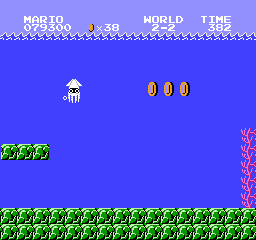 |
Bullet Bill / Killer
The bullet enemy in the Japanese version is called a “Killer”. A very simple, yet intimidating name to be sure.
Maybe that seemed a little too violent or harsh, because the bullets became known as “Bullet Bills” in America. But they mention “killing” plenty of times in the instruction manual, so that theory seems kind of weak.
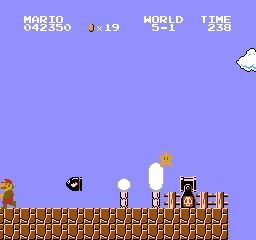 |
Podoboo / Bubble
This fireball enemy is known as a “Bubble” in the Japanese version.
In the American version, it’s apparently called a “Podoboo”. I don’t think I’ve ever heard anyone call them by that name though – usually I just hear “fireballs” or “fire thingies” or something like that. I wonder if they kept this name in future games. I guess maybe we’ll see someday.
Incidentally, in some of the Zelda games the fireball/energy ball enemies are sometimes called “Bubbles” too. I wonder if there’s something about Japanese naming sensibilities that make “Bubble” a good fit for fireball enemies.
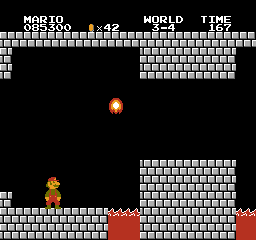 |
Hammer Brothers
In the American version of Super Mario Bros., these scary, pesky enemies are called Hammer Brothers. Since they’re pretty infamous, I’d always wondered what they were called in Japanese. It turns out they’re called “Hammer Brothers” in the Japanese version too. One of the few enemies without a name change.
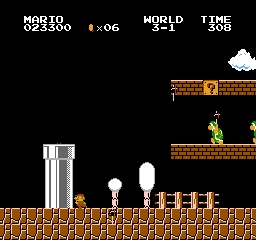 |
Magic Mushroom / Super Mushroom
In the Japanese version, the famous embiggening mushroom is called a “Super Mushroom”.
In the American version, it’s called a “Magic Mushroom”.
The Japanese name makes more logical sense from a gameplay perspective. It’s anyone’s guess why they changed it for the American version, maybe it was just on a whim or someone was working a late night or something.
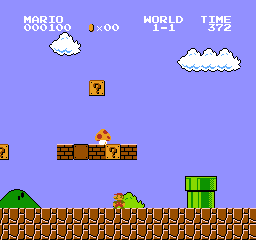 |
Starman / Super Star
In Japanese, the invincibility star is called a “Super Star”.
In the American version, it’s called a “Starman”. An interesting change, I wonder how it came about.
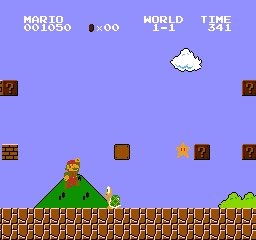 |
Name List
Here’s a handy list of all differences between the official names, for quick reference. Any typos you see are there because that’s how the American manual spelled stuff.


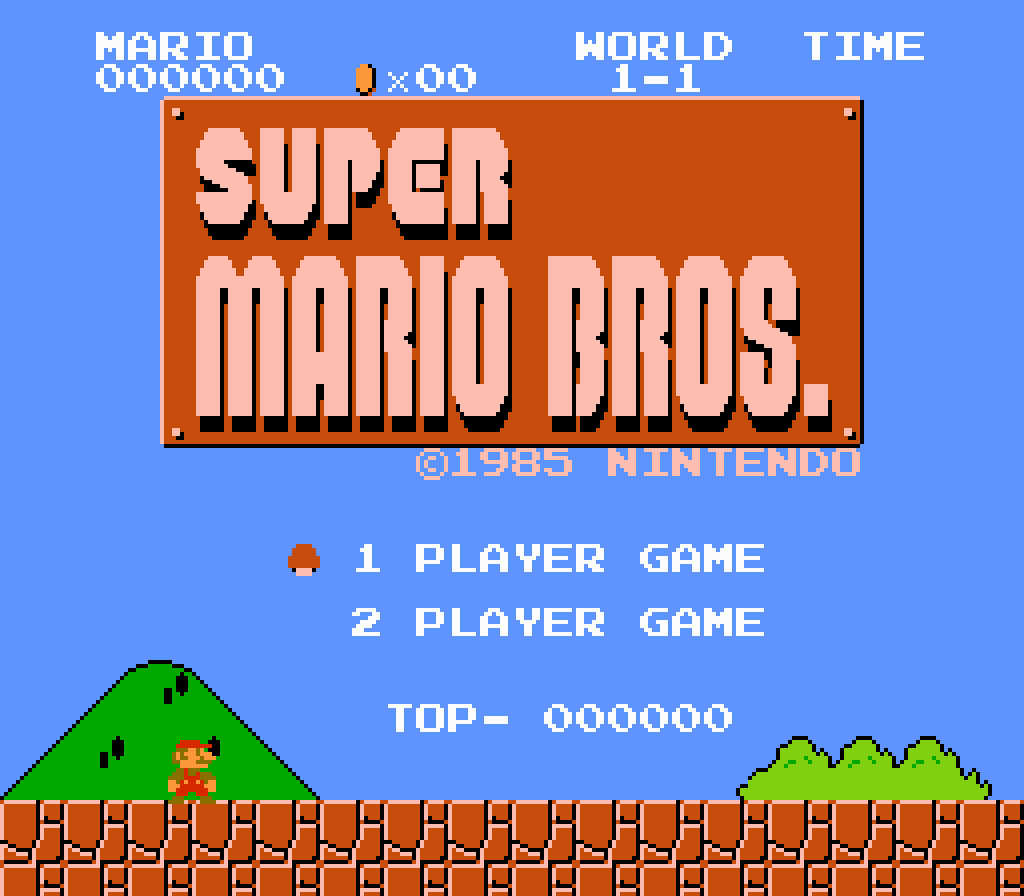
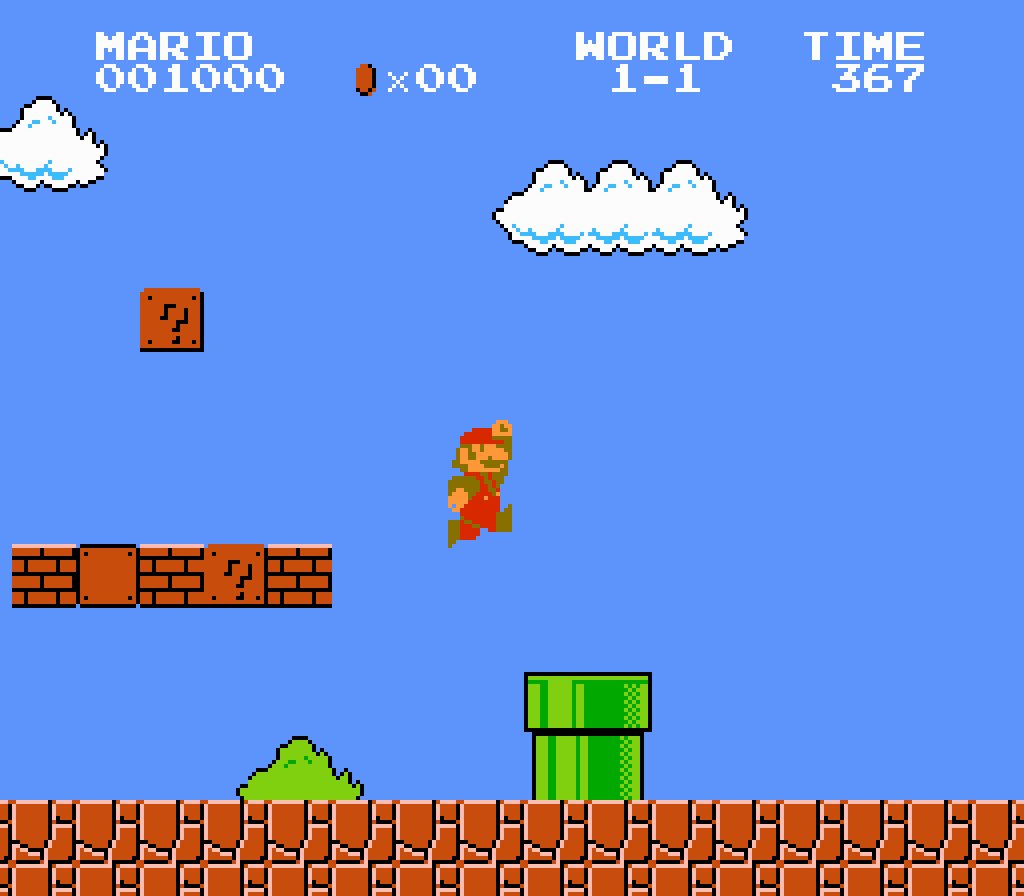
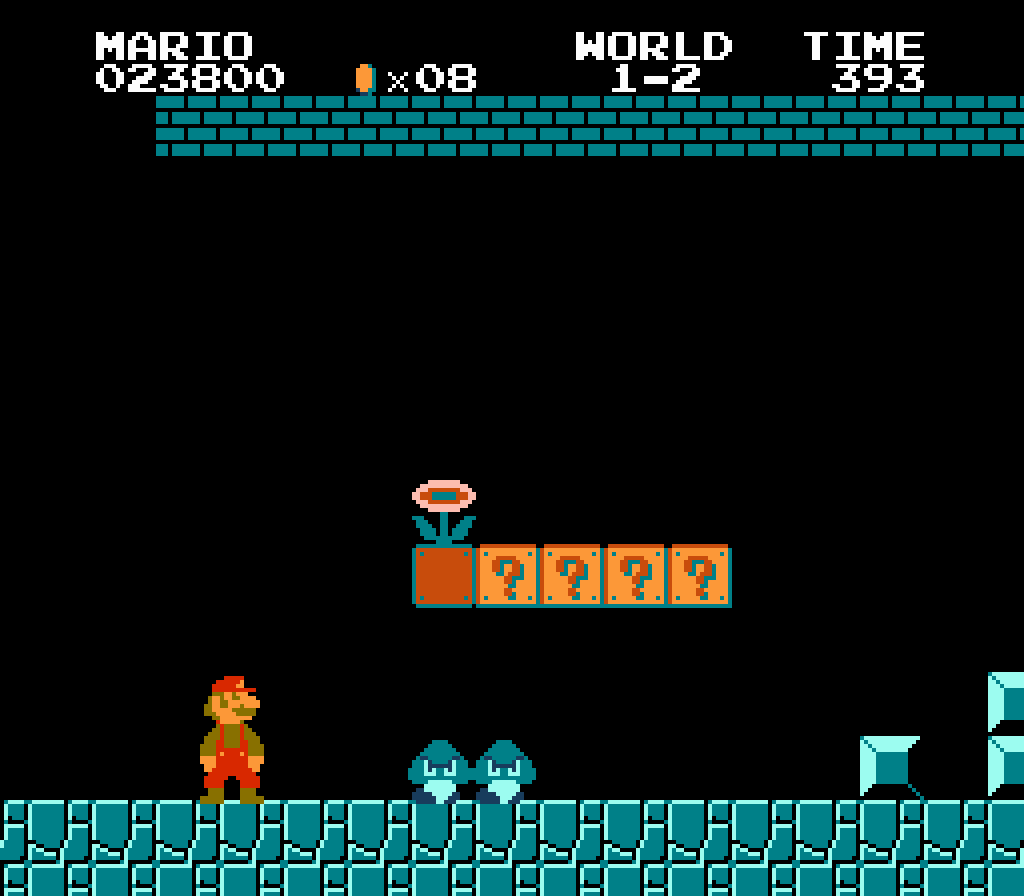
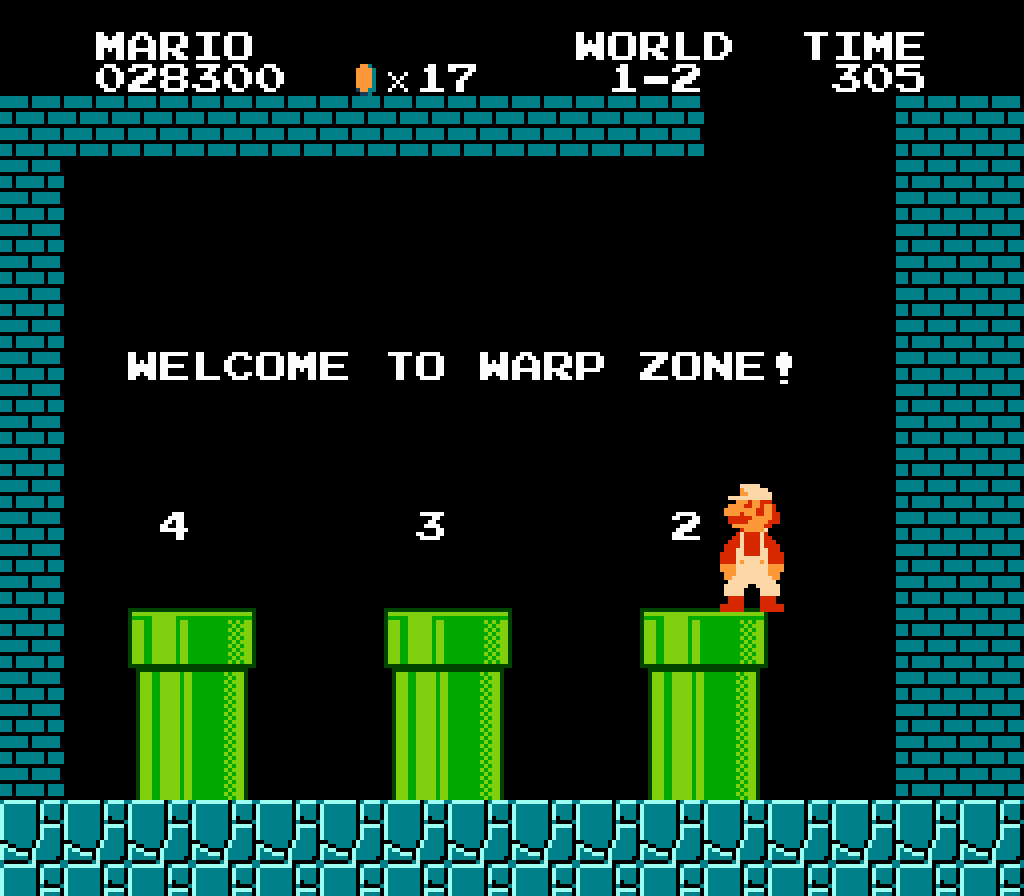
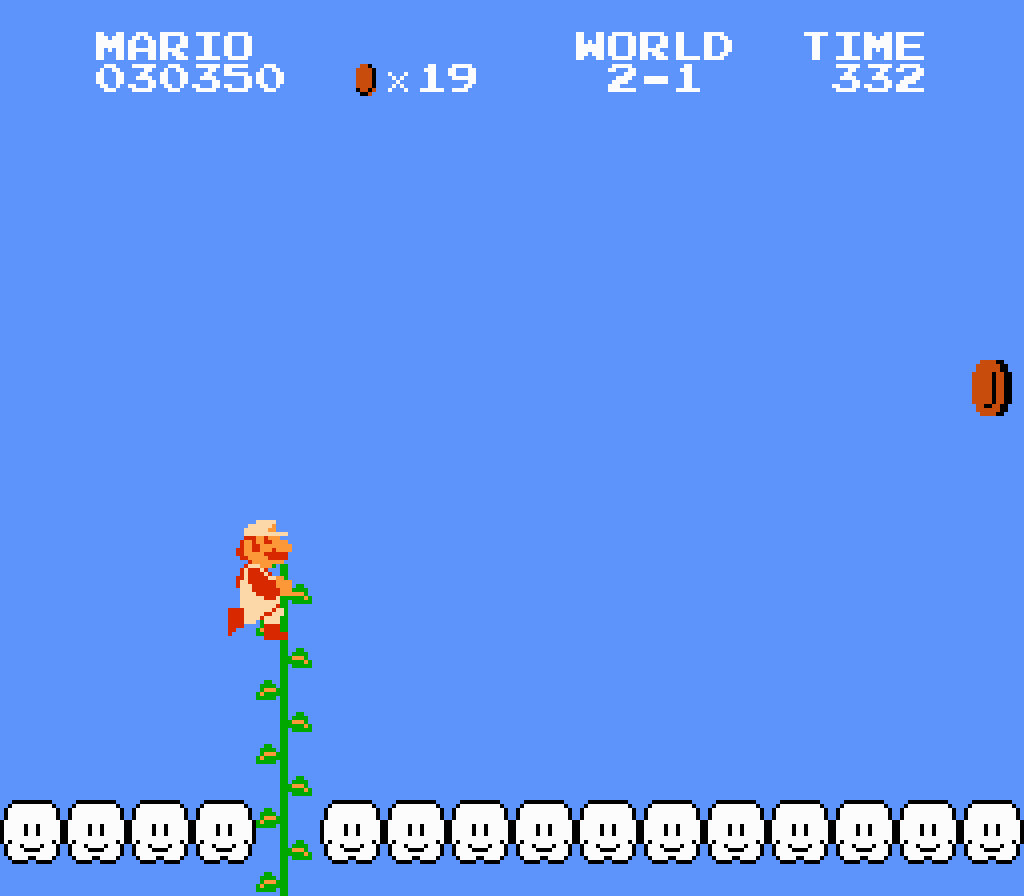
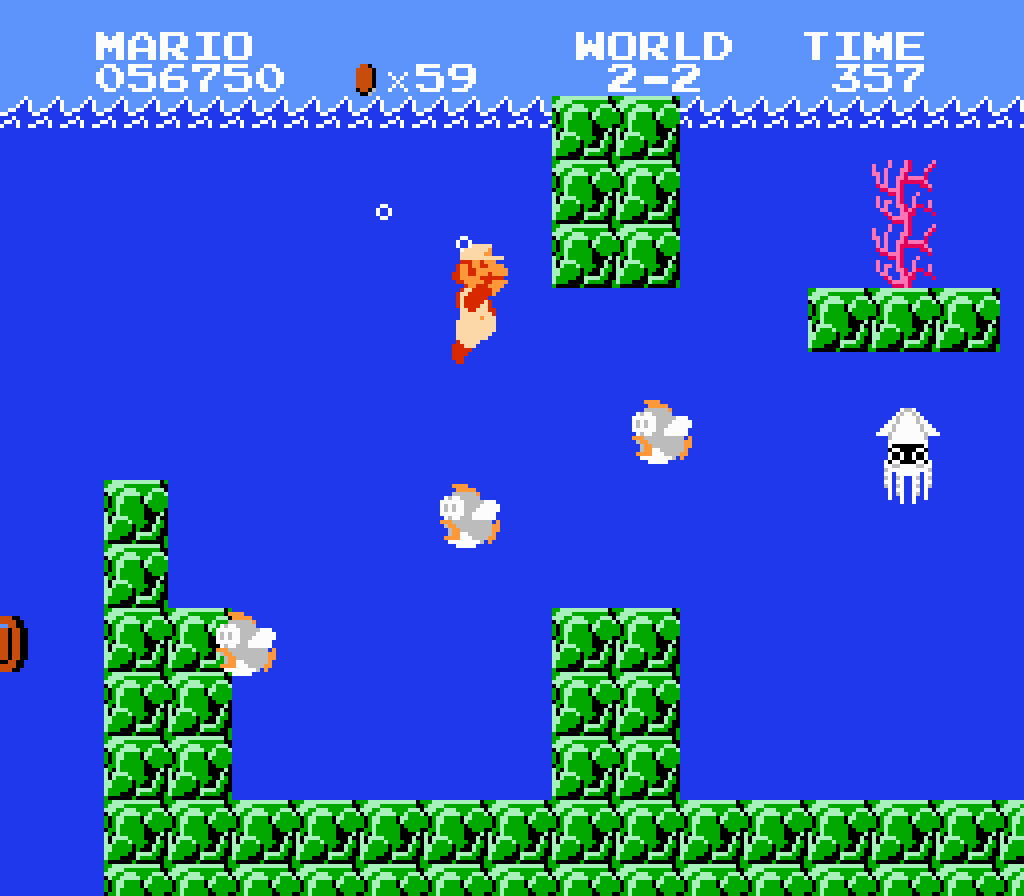
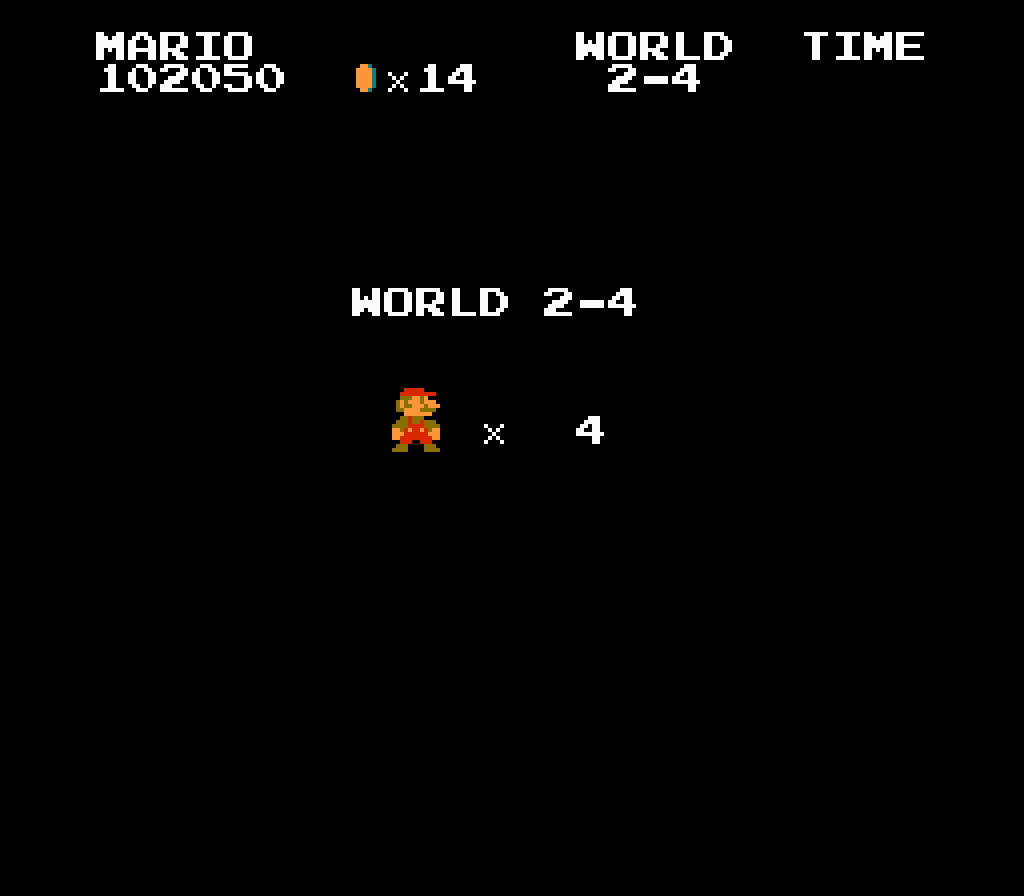
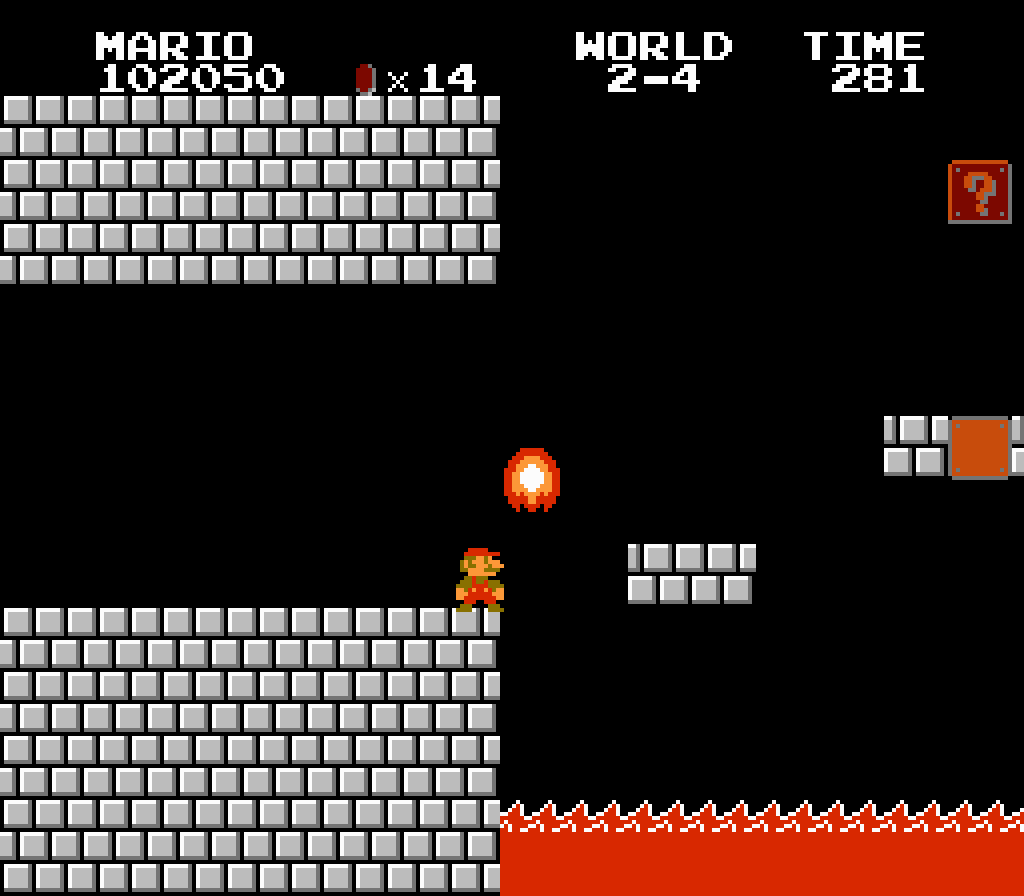
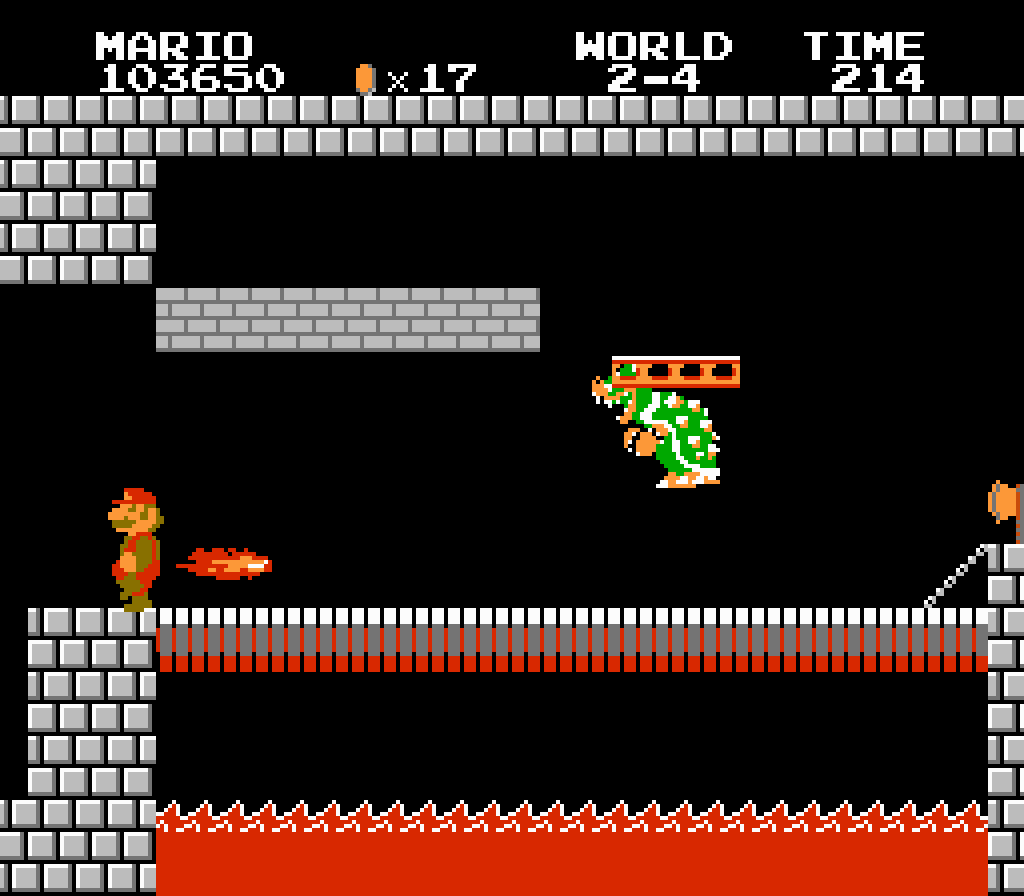
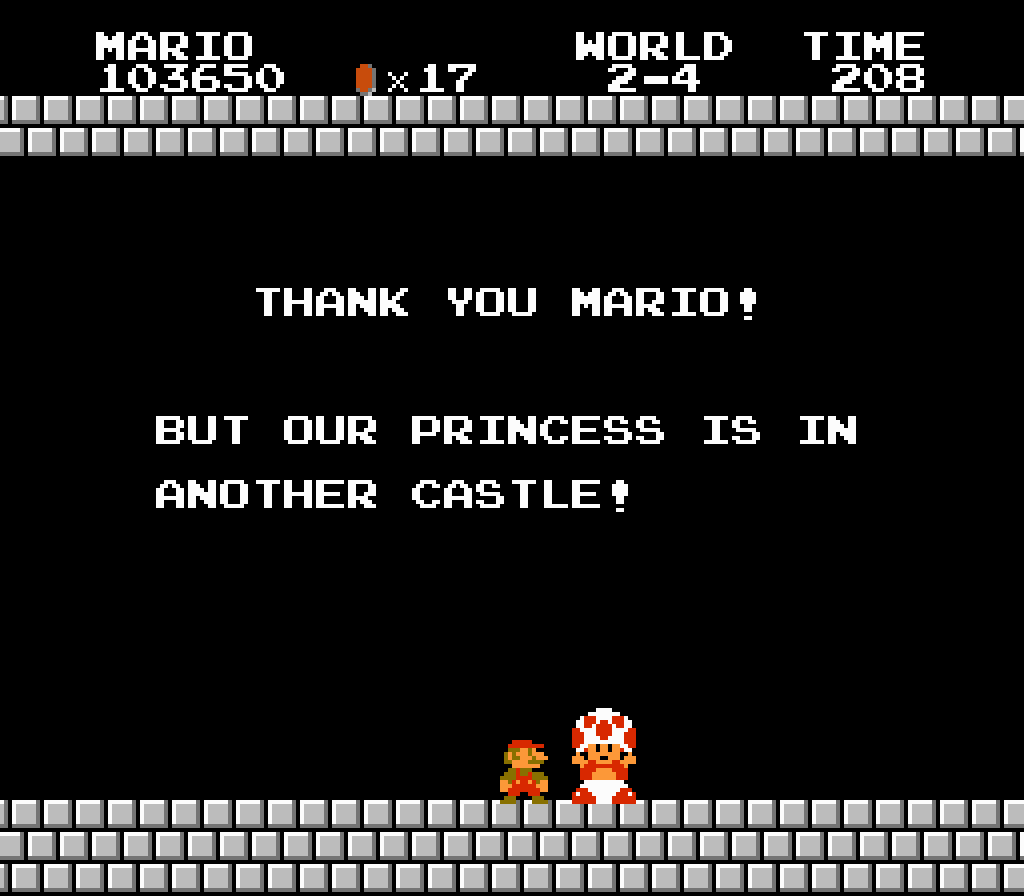

No Comments